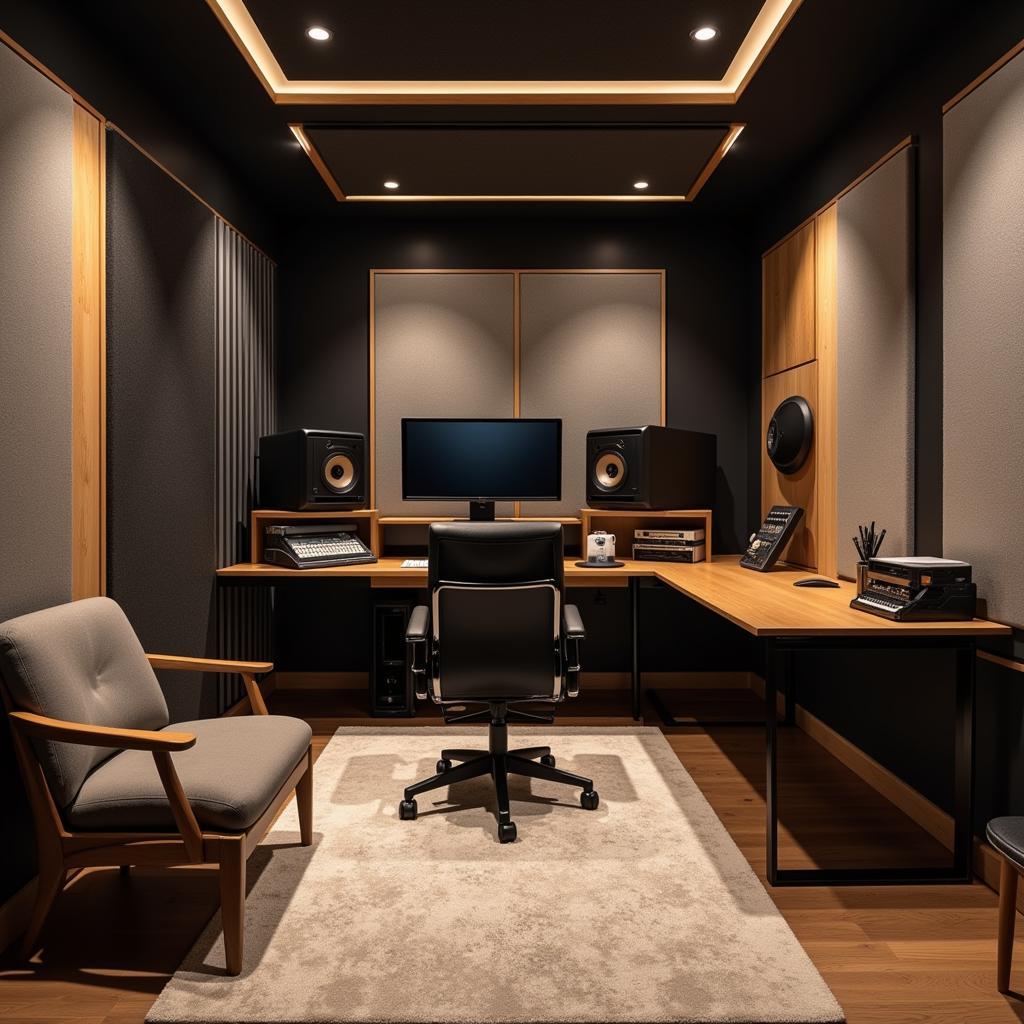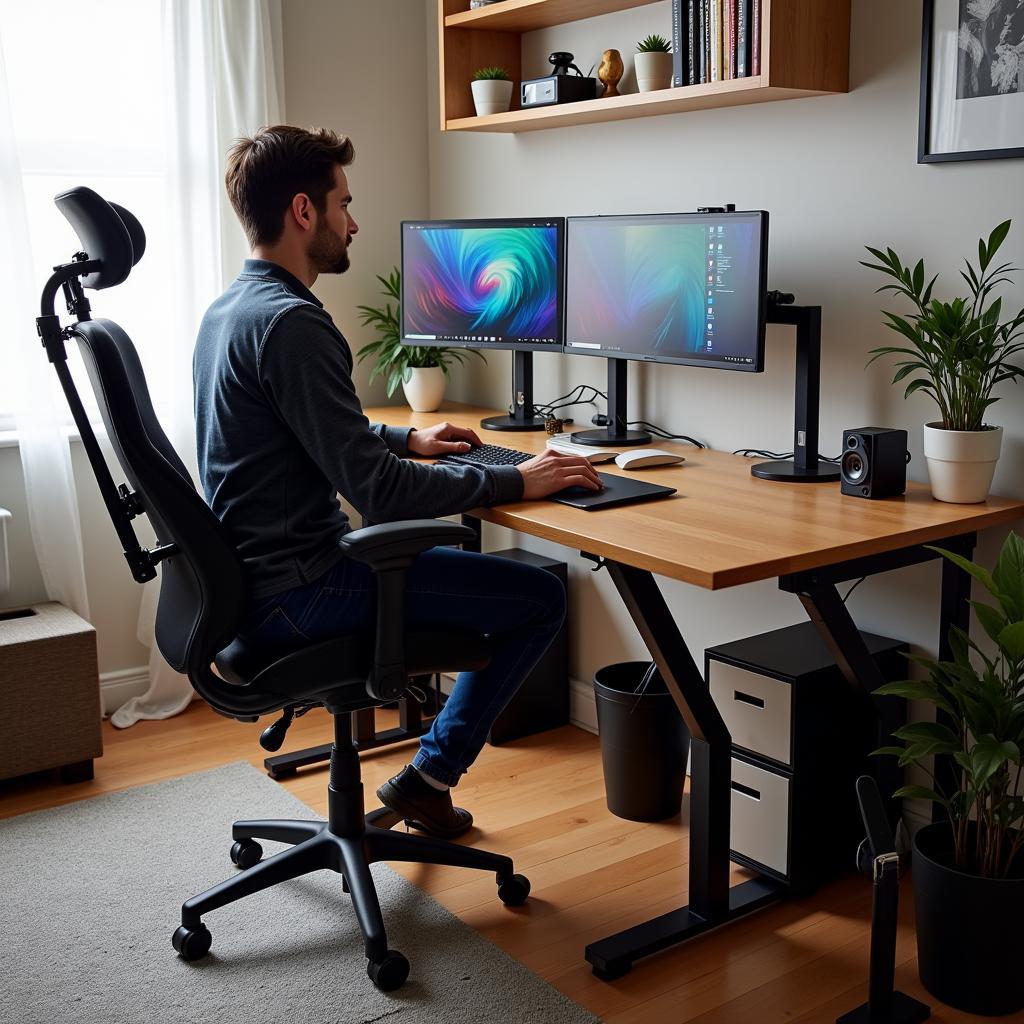Designing a home studio is an exciting endeavor, allowing you to unleash your creativity in a dedicated space. Whether you’re a musician, artist, or content creator, your home studio should reflect your personal style and meet your functional needs. This guide will walk you through the essentials of Home Studio Design, covering everything from planning and acoustics to aesthetics and equipment integration.
 Modern Home Studio Design Inspiration
Modern Home Studio Design Inspiration
Planning Your Home Studio
Before diving into aesthetics, prioritize functionality.
- Purpose: Identify your primary activities in the studio (recording music, podcasting, painting, etc.) This will dictate the layout, equipment, and storage needs.
- Space Assessment: Determine the available space and its suitability. Consider ceiling height, natural light, and potential noise issues.
- Budget Allocation: Set a realistic budget for construction, equipment, acoustic treatment, and decor.
The Sound of Silence: Acoustic Treatment
Achieving optimal sound within your home studio is paramount.
- Sound Absorption: Use acoustic panels, bass traps, and diffusers to minimize sound reflections, echoes, and reverberations.
- Soundproofing: Isolate your studio from external noise by adding mass to walls, sealing air gaps, and using soundproof doors and windows.
- Flooring: Choose flooring that minimizes sound transmission, such as carpets or rugs over a concrete subfloor.
Ergonomics and Workflow
A comfortable and efficient workspace is crucial for long hours of productivity.
- Desk Selection: Opt for a desk with ample surface area, cable management solutions, and adjustable height options.
- Ergonomic Chair: Invest in a comfortable and supportive chair to maintain good posture and prevent discomfort.
- Monitor Placement: Position your computer monitors at eye level and at an appropriate distance to reduce eye strain.
 Ergonomic Home Studio Setup for Productivity
Ergonomic Home Studio Setup for Productivity
Lighting and Aesthetics
The right lighting and aesthetics can inspire creativity and set the mood.
- Natural Light: Maximize natural light to reduce eye strain and create a welcoming environment.
- Artificial Lighting: Utilize a combination of ambient, task, and accent lighting to create a balanced and functional workspace.
- Color Palette: Choose colors that inspire you and align with your creative process. Consider calming hues for relaxation or vibrant shades for energy.
Equipment Integration and Cable Management
Seamlessly integrating your equipment and managing cables is essential for a professional-looking studio.
- Cable Organization: Use cable ties, raceways, and under-desk trays to keep cables organized and out of sight.
- Power Management: Install ample power outlets and consider a surge protector to safeguard your equipment.
- Equipment Placement: Arrange equipment for easy access and workflow efficiency.
Conclusion
Designing your dream home studio is a journey of blending functionality, comfort, and aesthetics. By carefully considering your needs, investing in proper acoustic treatment, and prioritizing ergonomics, you can create a space that inspires creativity for years to come. Remember, your home studio is an extension of your artistic vision, so embrace the process and enjoy the journey of bringing your creative haven to life.